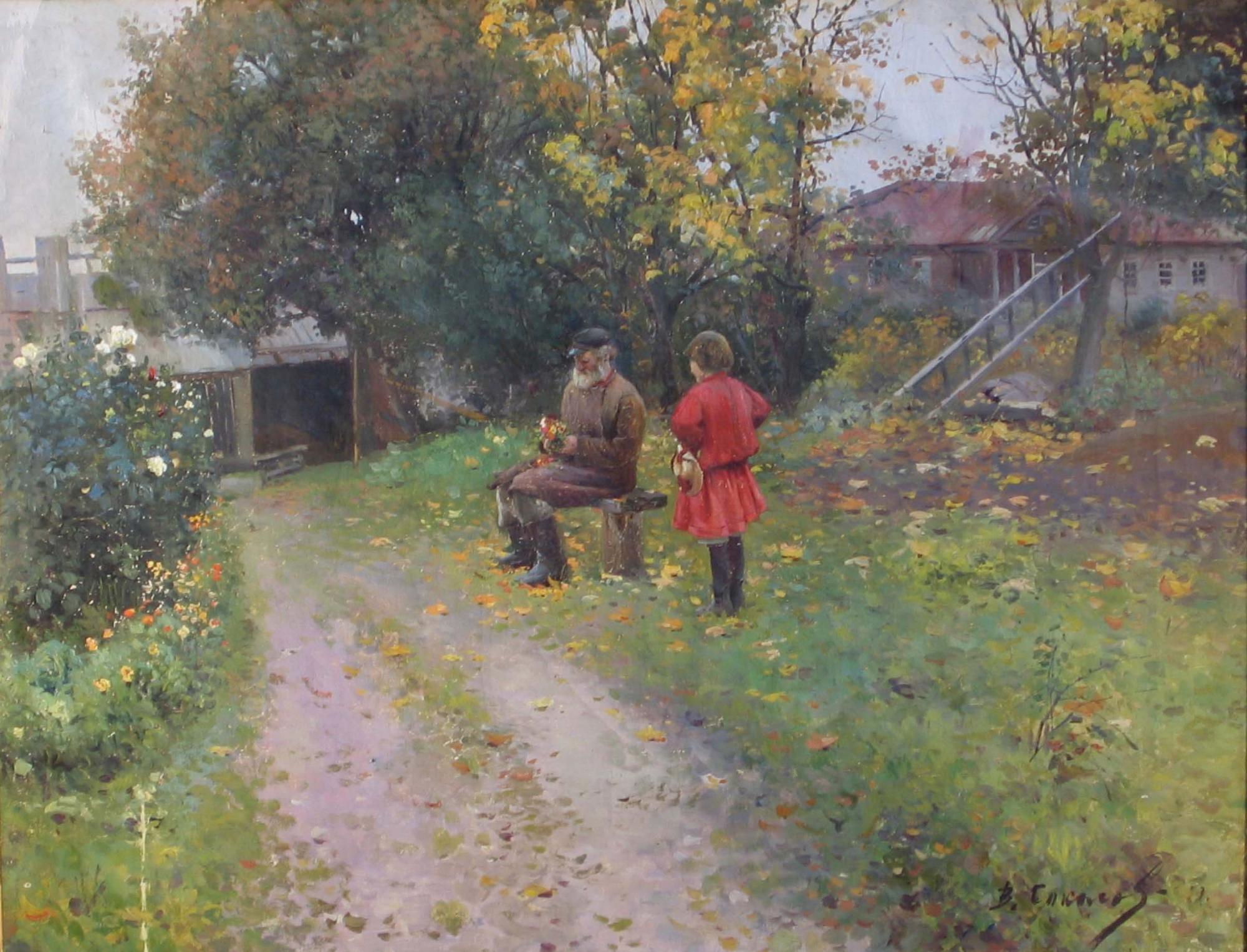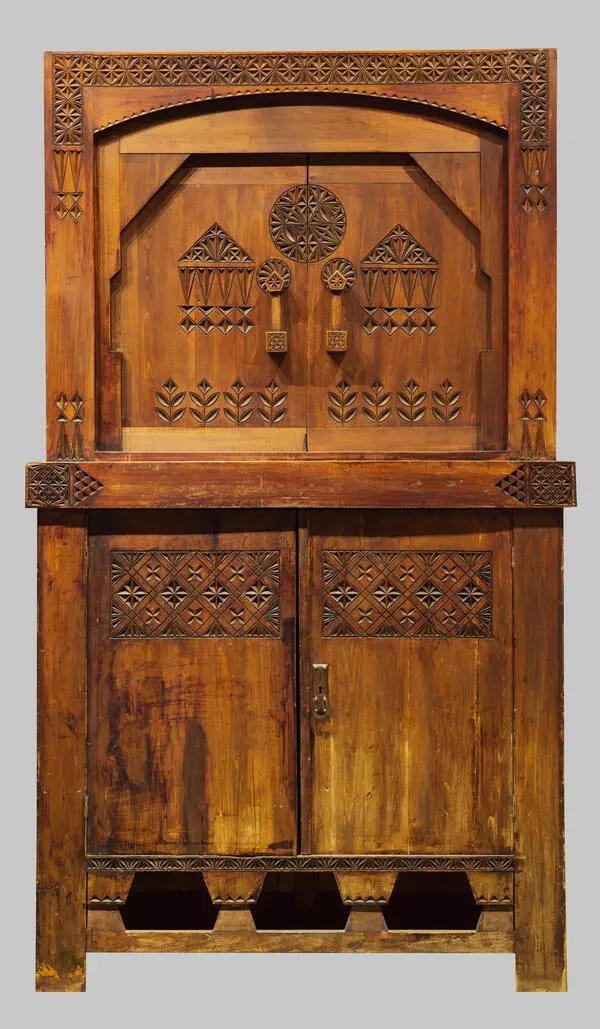Vladimir Ivanovich Sokolov (1872-1946) studied at the Stroganov School, after which in 1894 he graduated from the Moscow School of Painting, Sculpture and Architecture. His mentors there were Vasily Polenov, Isaac Levitan, and also Valentin Serov. The landscape painter Vasily Perepletchikov, who worked in the traditions of the later Itinerants, had a great influence on the painter. It was largely due to him that Vladimir Sokolov became interested in the landscape.
In 1899, the painter took part in his first exhibition, and by the beginning of the 1900s he had become a recognized artist, the owner of prestigious prizes and all kinds of trophies. Since 1916, Vladimir Sokolov was a member of the Association of Itinerant Art Exhibitions, later he regularly exhibited in Soviet museums.
Thanks to his acquaintance with Levitan, the philanthropist Savva Timofeevich Morozov offered Sokolov a place as a teacher of drawing and draughting at the County training workshop in Sergiev Posad. Three years later, Sokolov completely supervised the art and carpentry workshop. As a result, the artist spent most of his life in Sergiev Posad (Zagorsk), and created a number of works dedicated to this city: ‘Autumn in Sergievsky Posad. First Snow"(1915), ‘Revolutionary Parade in Sergiev Posad. February 1917’,"Zagorsk in 1942’. In 1927, Sokolov created an illustrated guide to the Sergiev Posad History and Art Museum.
The image of discreet corners of nature in small Russian cities is a motive that has always been present in the artist’s work. The painting ‘Autumn in the Garden’ from the Zaraysk Kremlin painting collection is one of the examples of early works on this topic. In this picture of the young artist, echoes of the Isaac Levitan’s influence are still clearly visible, although the personal manner of the painter is already felt. This is a work full of soulful poetry, from which comes a feeling of tranquility and comfort. The garden at the manor house is already in the toils of autumn, although the last flowers are still enlivening the space. In the center of the canvas, an old gardener collects a simple bouquet, and even a thin thread hanging from his mouth is noticeable to an attentive eye. The dressy red shirt on the boy next to the old man is the highlight of the picture. This bright spot of color gives a special touch to the whole piece, painted in shades of gray and green with the addition of yellow tints of autumn foliage.
In 1899, the painter took part in his first exhibition, and by the beginning of the 1900s he had become a recognized artist, the owner of prestigious prizes and all kinds of trophies. Since 1916, Vladimir Sokolov was a member of the Association of Itinerant Art Exhibitions, later he regularly exhibited in Soviet museums.
Thanks to his acquaintance with Levitan, the philanthropist Savva Timofeevich Morozov offered Sokolov a place as a teacher of drawing and draughting at the County training workshop in Sergiev Posad. Three years later, Sokolov completely supervised the art and carpentry workshop. As a result, the artist spent most of his life in Sergiev Posad (Zagorsk), and created a number of works dedicated to this city: ‘Autumn in Sergievsky Posad. First Snow"(1915), ‘Revolutionary Parade in Sergiev Posad. February 1917’,"Zagorsk in 1942’. In 1927, Sokolov created an illustrated guide to the Sergiev Posad History and Art Museum.
The image of discreet corners of nature in small Russian cities is a motive that has always been present in the artist’s work. The painting ‘Autumn in the Garden’ from the Zaraysk Kremlin painting collection is one of the examples of early works on this topic. In this picture of the young artist, echoes of the Isaac Levitan’s influence are still clearly visible, although the personal manner of the painter is already felt. This is a work full of soulful poetry, from which comes a feeling of tranquility and comfort. The garden at the manor house is already in the toils of autumn, although the last flowers are still enlivening the space. In the center of the canvas, an old gardener collects a simple bouquet, and even a thin thread hanging from his mouth is noticeable to an attentive eye. The dressy red shirt on the boy next to the old man is the highlight of the picture. This bright spot of color gives a special touch to the whole piece, painted in shades of gray and green with the addition of yellow tints of autumn foliage.





